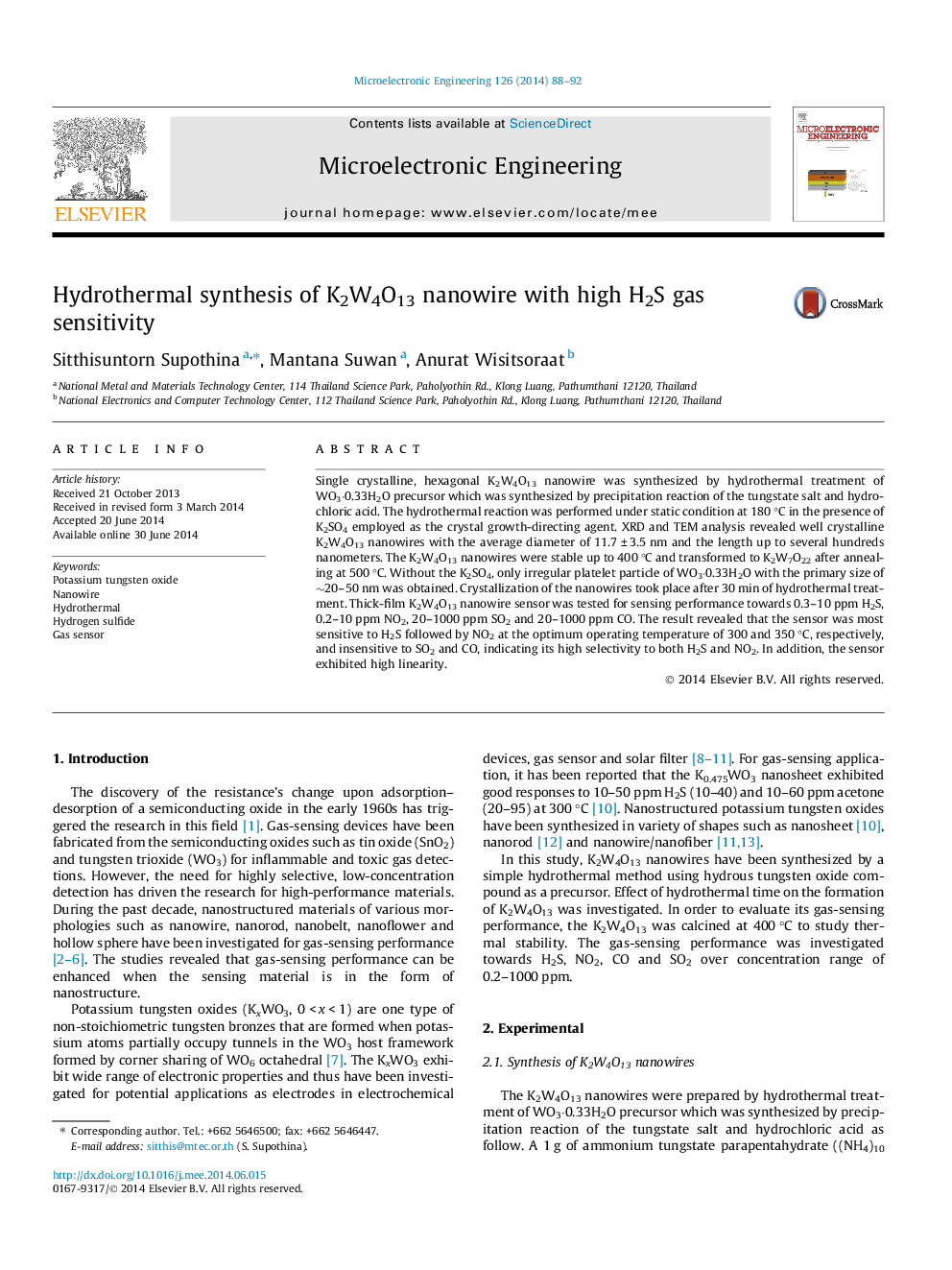| Article ID | Journal | Published Year | Pages | File Type |
|---|---|---|---|---|
| 539339 | Microelectronic Engineering | 2014 | 5 Pages |
•Uniform K2W4O13 nanowire was prepared at modest hydrothermal temperature of 180 °C.•The K2W4O13 phase was stable up to 500 °C making it suitable for gas sensor.•The K2W4O13 sensor was selective to H2S with fast response and recovery times.•The sensor had high linearity for 0.3–10 ppm H2S making it suitable for H2S sensor.
Single crystalline, hexagonal K2W4O13 nanowire was synthesized by hydrothermal treatment of WO3·0.33H2O precursor which was synthesized by precipitation reaction of the tungstate salt and hydrochloric acid. The hydrothermal reaction was performed under static condition at 180 °C in the presence of K2SO4 employed as the crystal growth-directing agent. XRD and TEM analysis revealed well crystalline K2W4O13 nanowires with the average diameter of 11.7 ± 3.5 nm and the length up to several hundreds nanometers. The K2W4O13 nanowires were stable up to 400 °C and transformed to K2W7O22 after annealing at 500 °C. Without the K2SO4, only irregular platelet particle of WO3·0.33H2O with the primary size of ∼20–50 nm was obtained. Crystallization of the nanowires took place after 30 min of hydrothermal treatment. Thick-film K2W4O13 nanowire sensor was tested for sensing performance towards 0.3–10 ppm H2S, 0.2–10 ppm NO2, 20–1000 ppm SO2 and 20–1000 ppm CO. The result revealed that the sensor was most sensitive to H2S followed by NO2 at the optimum operating temperature of 300 and 350 °C, respectively, and insensitive to SO2 and CO, indicating its high selectivity to both H2S and NO2. In addition, the sensor exhibited high linearity.
Graphical abstractFigure optionsDownload full-size imageDownload as PowerPoint slide
